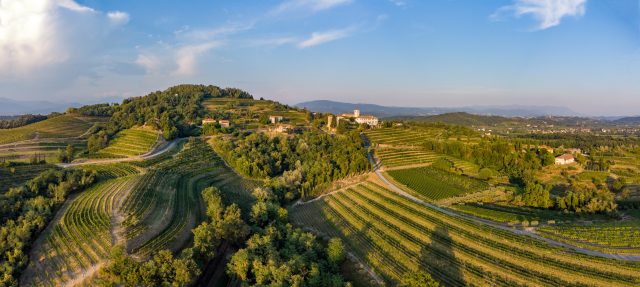This website uses cookies so that we can provide you with the best user experience possible. Cookie information is stored in your browser and performs functions such as recognising you when you return to our website and helping our team to understand which sections of the website you find most interesting and useful.
Is Friuli Venezia Giulia Italy’s next major wine destination?
Though only small in size, the northeastern Italian region of Friuli Venezia Giulia could have big potential when it comes to food and wine tourism.

At the London launch of the Lonely Planet guide to Friuli Venezia Giulia, the first such book on the area from Lonely Planet, author Luigi Farrauto, who is originally from Milan, noted that even Italians overlook this region on the edge of the country: “The reality is that in Italy we don’t know Friuli Venezia Giulia, we think Italy ends at Venice!”
It’s not a region short of draws. There was plenty of talk of the region’s scenic mountains, Mediterranean coastline and historical cities. Winter sports holidays and city breaks are certainly popular, but, particularly in a region as small as Friuli Venezia Giulia (it is estimated that you can cross it in two hours by car), you are also never far away from great food and drink.
Much of Friuli Venezia Giulia’s cuisine does have an Alpine inflection, with an emphasis on cheeses and cured meats (such as Prosciutto di San Daniele), but also seafood. Its other great claim to fame is that it is the likely birthplace of the tiramisù, though the people of Treviso in Veneto dispute that.
When it comes to wine, the region contains nine DOCs and three DOCGs. There are also three interregional DOCs (Prosecco, Delle Venezie, and Lison Pramaggiore), and one interregional DOCG (Lison).
All in all, the region’s approximately 1,700 wineries produce around 90 million bottles a year, with an export value of €180 million. Of the almost 28,000 hectares of vineyards in Friuli Venezia Giulia, a staggering 85% is utilised for the cultivation of white varieties (such as Pinot Grigio, Glera and Ribolla Gialla), whereas only 15% is used for red varieties (like Schioppettino and Pignolo).
Speaking as part of a panel, Lonely Planet vice president Tom Hall said: “My observation is that good and wine tourism is about going to the source…it taps into this idea of travel as being the most authentic experience you can find.”
Indeed, the guide itself suggests a number of such experiences that visitors can enjoy.
When asked about if any part of the region had become his favourite after his extensive research for the book, Farrauto said: “The place that really took my heart was Collio, where people can experience the real dolce vita Friulana…You meet the locals and start talking about food, wine and how good enjoying life is.”
The guide notes one of Collio’s big draws being Collio DOC’s white wines “and emerging orange wines”. Situated to the west of the city of Gorizia by the Slovenian border, the DOC is known for its marl and sandstone soils, on which both indigenous (e.g: Friulano, Ribolla Gialla and Malvasia) and international varieties (e.g: Sauvignon Blanc and Riesling) are cultivated.
Chatting with db at a reception afterwards over a glass of Borgo Conventi Collio DOC Friulano, brand ambassador Andrea Samperi said: “Wine tourism is getting more and more interest. Friuli Venezia Giulia is a melting pot of cultures – it’s at the border with Slovenia and Austria – the food and wine really represents what Friuli Venezia Giulia is.”
“It’s family-driven tourism,” he continued. “It’s not the sort of place you go to find clubs! You go to relax, to find beauty, and unique food and wine – even the food and wines are exotic expressions of flavours you don’t find in other parts of Italy.”
Borgo Conventi is a good example of an estate that has developed experienced catered to paying visitors, offering them guided tours of its vineyards and cellar with a guided tasting at the end, and the option to try the wines alongside local delicacies.
Describing the character of the Friulani people, Samperi said: “They are very linked with their terroir – they are natural, real, straightforward people. They don’t need to hide anything.”
Though Catanese by birth and now living near London, Samperi has a strong affinity for this region in the other end of the country from Sicily: “I got to know Friuli Venezia Giulia thanks to my work in wine, and I fell in love with the region. Domestic tourism will start to grow, but international tourism will also be very important.”
International awareness is certainly increasing, a phenomenon which will only be accelerated by the publication of the guide, and the region is becoming increasingly accessible to overseas travellers – Ryanair now operates direct flights from Stansted to Trieste four times a week.
Friuli Venezia Giulia will have competition from other parts of Italy when it comes to attracting wine-inclined visitors – Tuscany, for example, already has a well-established oenotourism industry. Sicilian producers are also investing considerable amounts of money in developing experiences to cater for tourists.

